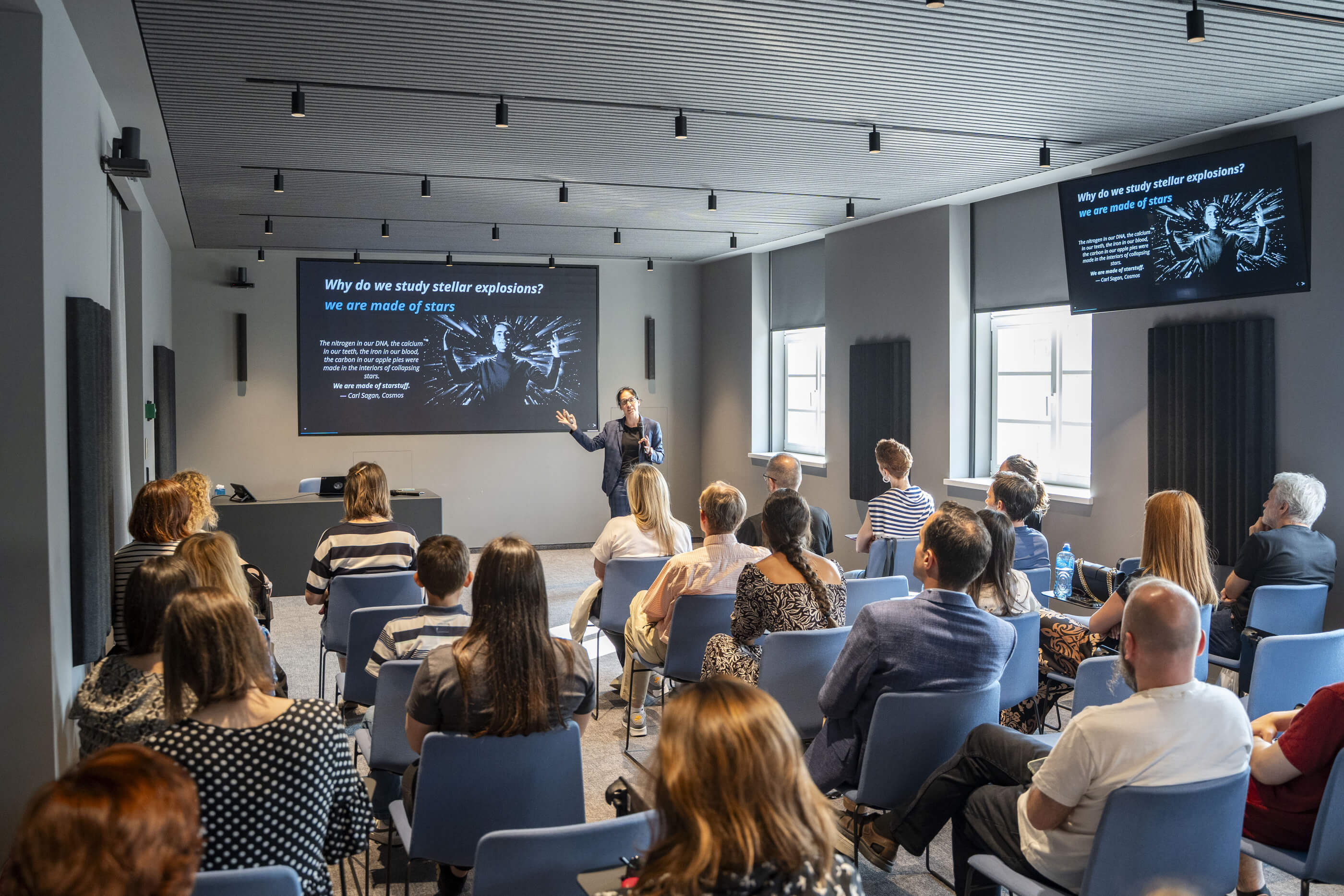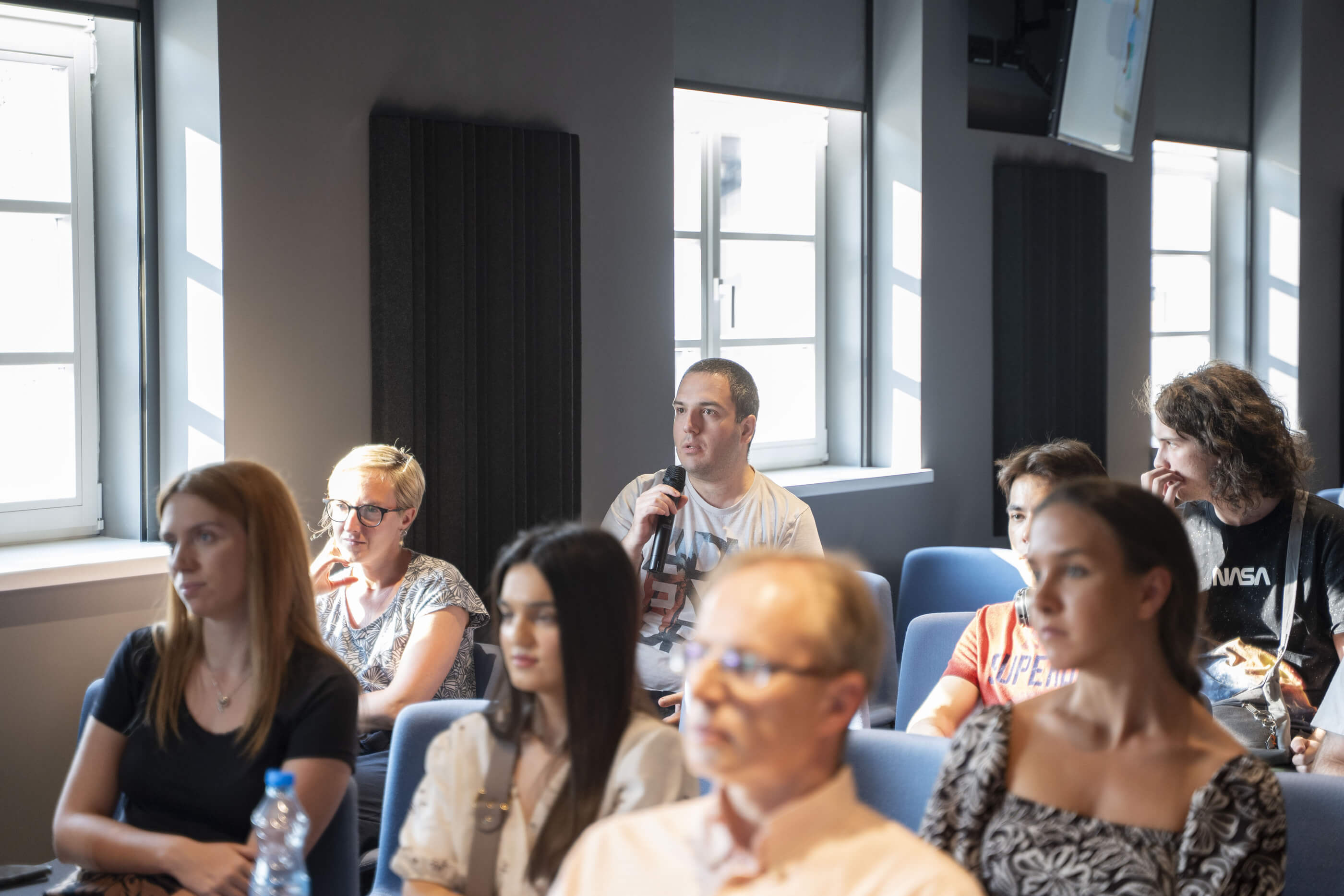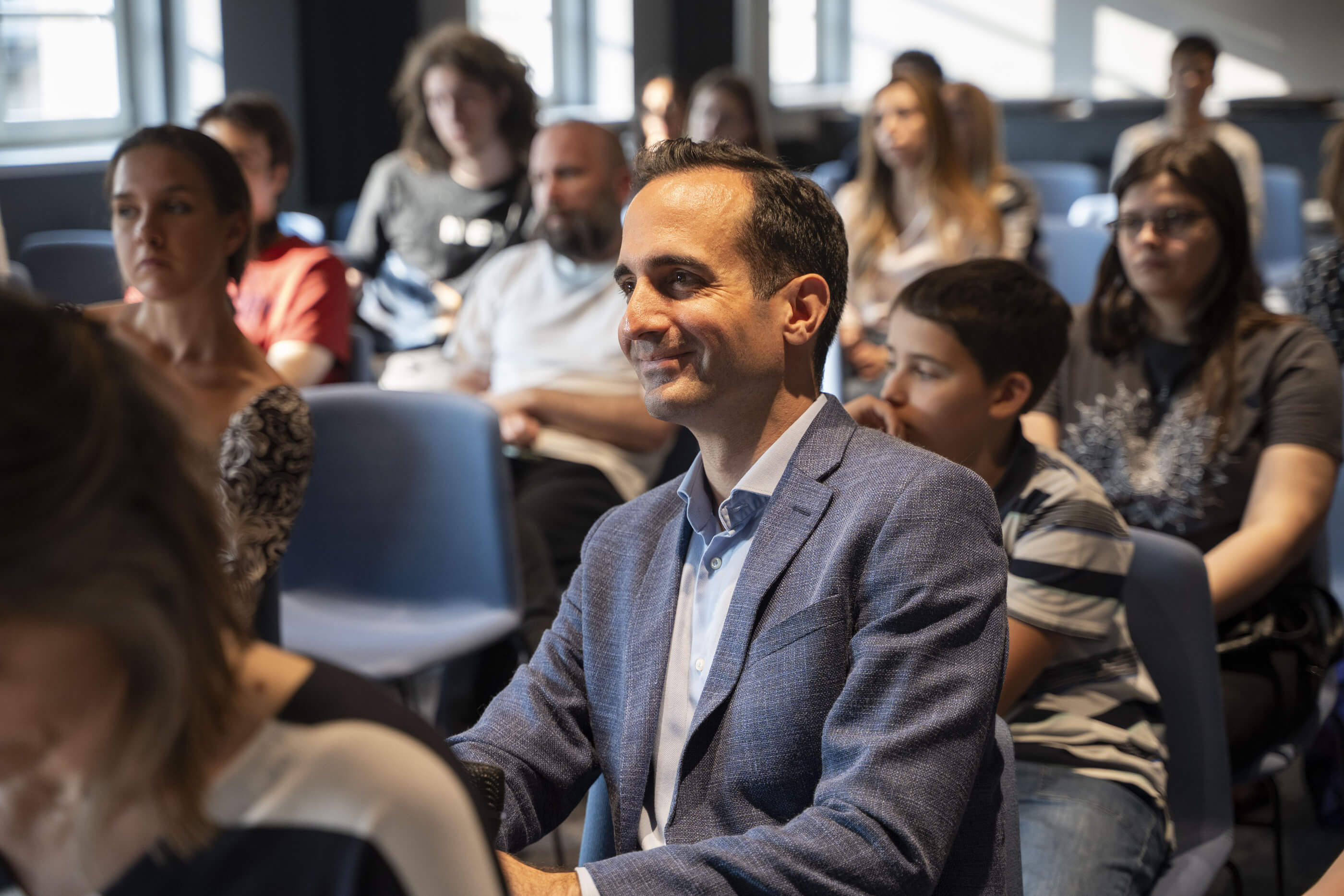The Palace of Science recently hosted Dr. Federica Bianco, Associate Professor at the University of Delaware and Deputy Chief Scientist of the Vera C. Rubin Observatory project. In her lecture titled “Do Androids Dream of Exploding Stars and Receding Galaxies?” she shared insights into the goals, technologies, and methodologies behind one of the most ambitious contemporary projects in astronomy.
Over the next decade, the Rubin Observatory will systematically survey the night sky, monitoring changes across space and time. The project targets a diverse range of cosmic objects — from bodies within our Solar System and supernova explosions to the most distant galaxies — aiming to create the most extensive database ever assembled on the dynamic processes shaping our universe.
A centerpiece of the project is the development of the largest digital camera ever constructed. Each night, this camera will capture up to 1,000 ultra-high-resolution images, each containing around 3 billion pixels. To display a single full-resolution image would require approximately 3,500 HD screens.
Dr. Bianco placed special emphasis on the crucial role of artificial intelligence in the project. She highlighted that without advanced algorithms, processing and interpreting the enormous volume of data generated by the observatory would be impossible. Artificial intelligence enables faster and more accurate detection of cosmic changes, pattern recognition, and the discovery of new phenomena — dramatically expanding the horizons of our understanding of the cosmos.
The lecture was organized in collaboration with the SER-SAG team from the Department of Astronomy at the Faculty of Mathematics, University of Belgrade, which participates in the Rubin Observatory’s in-kind program.





